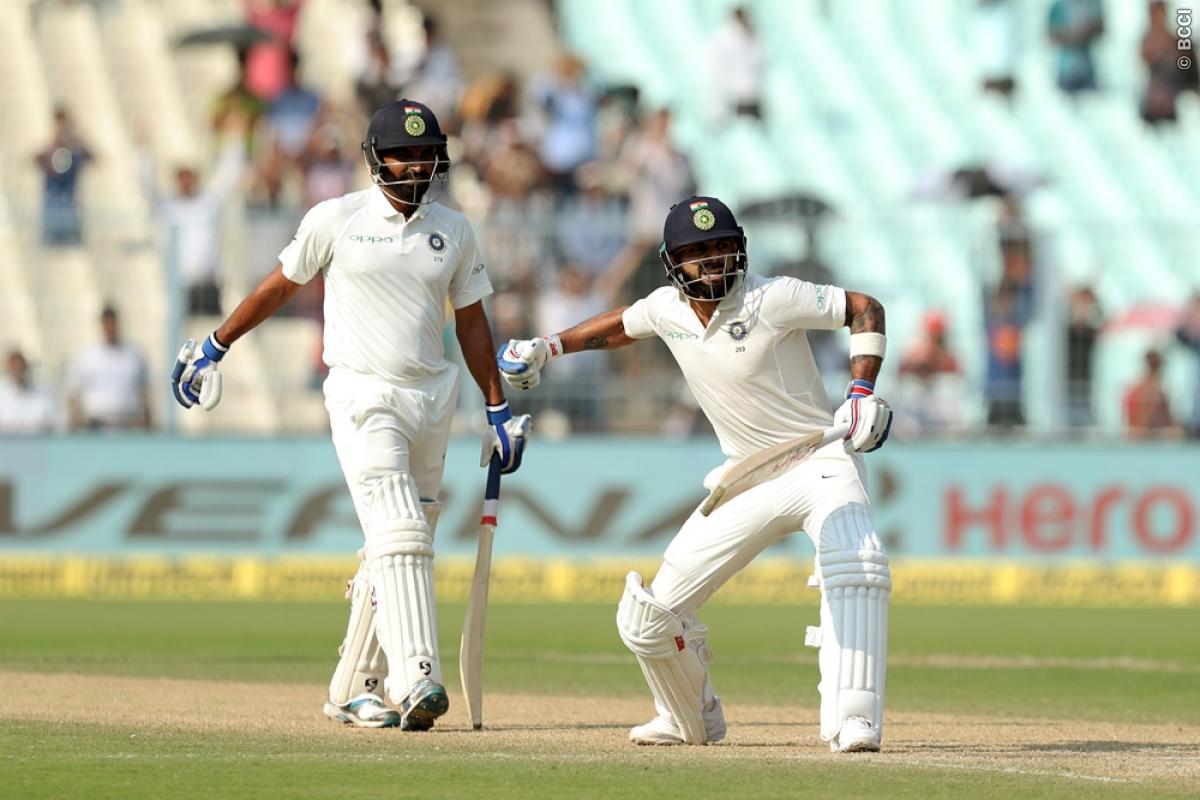India well-placed to end frustrating South Africa hoodoo

BCCI
Sri Lanka - Check, South Africa – Tick, New Zealand – Done, England – Done and dusted, Bangladesh – Okay, No problem. Australia – Cool. Taken care. Sri Lanka – Wow. Get ready, time for some records. This is India, unbeatable India - the best Test team in the World at the moment. Or are they?
This is the question that will be answered over the next one month, for sure. However, putting cynicism aside, Virat Kohli, egged on by a pace attack and a winning streak that stands a chance to create history, promised that his side would "enjoy the challenges posed by the conditions" and use the experience to rewrite the history books and push for a maiden Test series win in the “rainbow nation”.
India
All this struggle make the thing slightly complicated and then it is conveniently forgotten that India
Openers need to save Kohli and Rahane from exposing to new balls
Since taking over the role of India’s Test No.4 after Sachin Tendulkar retired from Test cricket, Virat Kohli has been the most prolific batsman at the position, having averaged a brilliant 62.04 runs and that is five runs higher than Steve Smith who averages 57.38 while batting at No.4. Interestingly, Kohli has achieved these colossal numbers despite having two utterly forgettable series in between – a trip to England in 2014 and a home series against Australia. That’s why as much as India need him to come out on top of the opposition attacks, the team also need Murali Vijay and Cheteshwar Pujara to shield him from the new ball.
Ajinkya Rahane will bat at No.5 and as we all know, he is one of the most terrific batsmen of pace bowling and had a pretty good record against the Proteas as well. And that is the reason why Indian openers need to bat for quite a long period to not expose the duo to the new ball. The Kookaburra ball, which will be used in the series, swings a lot when new and it has less of a seam than the Duke ball, which is why it loses the shine quickly. Consequently, as the ball gets older, it becomes easier to counter and if Kohli and Rahane come on then, they will be the biggest threats to the hosts.
Lower-order batting performance
Remember 2014 Adelaide Test when India found them at the touching distance from winning the first match of the series. When Vijay got out for 99, India only needed 122 runs to win with eight wickets at hand. India’s hero of the match, Virat Kohli was batting like a dream, but suddenly, he didn’t find a single steady partner at the other end. That’s why he had to go for big shots and lost his wicket when India needed 60 runs. India's last five wickets added 38 runs and India lost by 48 runs eventually. Unfortunately, for India, this is not a one-off incident, and rather something that has returned to hunt them time and again.
But this tendency has been changed drastically over the last two years and the team averaged a very impressive 34.52 per stand for Nos. 6 to 9 since April 2015. India will desperately need that to continue on this away run to perform well in South Africa. As per reports, Mohammed Shami and Umesh Yadav have had longer-than-usual batting stints at the nets in Cape Town which indicates that the team have started making them ready for challenges that lay ahead.

 © BCCI
© BCCISlip catching problem
Since the start of India's home season in 2016-17 against New Zealand, India have missed 37 catches in the slip-cordon, which doesn’t paint a good picture of the World No.1 team. India basically started facing these problems since the beginning of 2012-13 when all India's past slippers - Rahul Dravid and VVS Laxman - disappeared from the scene. Now, apart from Rahane, no one is that consistent in cordon - not even Kohli or Vijay.
Although the lack of familiarity can be listed as one of the major reasons, the technique has to be blamed as well. Dravid has also come in and advised the players to narrow their stance while taking low catches, but to no
Do away with one spinner
Much of India’s dominance in the last two years was because of the performance of Indian spinners who had wickets for breakfast, lunch, and dinner. But South Africa, who were undone by rank-turners in India in 2015, will not be at their hospitable best and would not provide even a moderately-turning wicket to India. And it was rightly understood, when Durban, the best venue for spinners outside Asia (spinners average 22.31 there), was excluded from the venues list of the Test series.
So, for the series, India can’t go for more than one spinner in the team and as a result of it, Ravichandran Ashwin or Ravindra Jadeja, whoever is picked, will be subject to bowling without the support of the other. That decision has probably been made easier with the fact that Jadeja is down with a viral infection. While the team management informed that a call on his availability would be taken on the morning of the match, the fact that Jadeja was absent from training and has been advised 48 hours of rest makes the matter clear about his chances. However, throughout the series, surfaces will demand more attrition and patience from them than they've been used to. Instead of going for attacks with the duo, Kohli will have to pick one bowler, who could bowl around the seamers and keep them in the game by keeping one end tight.
